Identification of Bots and Cyborgs in the #FeesMustFall Campaign
Abstract
:1. Introduction
The South African #FeesMustFall and Other Related Movements
2. Data and Methodology
3. Results
4. Discussion
5. Conclusions
Author Contributions
Funding
Institutional Review Board Statement
Informed Consent Statement
Data Availability Statement
Conflicts of Interest
References
- Statista Twitter Global mDAU 2021|Statista. Available online: https://www.statista.com/statistics/970920/monetizable-daily-active-twitter-users-worldwide/ (accessed on 9 February 2022).
- Moon, B. Identifying bots in the Australian Twittersphere. In Proceedings of the 8th International Conference on Social Media & Society, Toronto, ON, Canada, 28–30 July 2017; Association for Computing Machinery: New York, NY, USA, 2017. [Google Scholar]
- Singer, P.W.; Brooking, E.T. LikeWar: The Weaponization of Social Media; Eamon Dolan Books: New York, NY, USA, 2018. [Google Scholar]
- Rahman, N.; Maimuna, M.; Begum, A.; Ahmed, M.R.; Arefin, M.S. A Survey of Data Mining Techniques in the Field of Cyborg Mining BT. In Soft Computing for Security Applications; Ranganathan, G., Fernando, X., Shi, F., El Allioui, Y., Eds.; Springer: Singapore, 2022; pp. 781–797. [Google Scholar]
- Chu, Z.; Gianvecchio, S.; Wang, H.; Jajodia, S. Who is Tweeting on Twitter: Human, Bot, or Cyborg? In Proceedings of the 26th Annual Computer Security Applications Conference, Austin, TX, USA, 6–10 December 2010; Association for Computing Machinery: New York, NY, USA, 2010; pp. 21–30. [Google Scholar]
- Wigmore, I. What Is Software Robot? Available online: https://whatis.techtarget.com/definition/software-robot (accessed on 29 December 2021).
- Khan, F. The Weaponization of Social Media—CounterPunch.org. Available online: https://www.counterpunch.org/2018/11/09/the-weaponization-of-social-media/ (accessed on 29 December 2021).
- Dunham, K.; Melnick, J. Malicious Bots: An Inside Look into the Cyber-Criminal Underground of the Internet, 1st ed.; Auerbach Publications: New York, NY, USA; Boca Raton, FL, USA, 2008. [Google Scholar]
- AFP Surge in Anonymous Asia Twitter Accounts Sparks Bot Fears. Available online: https://www.dailymaverick.co.za/article/2018-04-22-surge-in-anonymous-asia-twitter-accounts-sparks-bot-fears/ (accessed on 29 December 2021).
- Wagner, C.; Mitter, S.; Körner, C.; Strohmaier, M. When Social Bots Attack: Modeling Susceptibility of Users in Online Social Networks. In Proceedings of the 2nd Workshop on Making Sense of Microposts, #MSM, Lyon, France, 16 April 2012; pp. 41–48. [Google Scholar]
- Suárez-Serrato, P.; Roberts, M.E.; Davis, C.; Menczer, F. On the influence of social bots in online protests. In Proceedings of the International Conference on Social Informatics, Bellevue, WA, USA, 11–14 November 2016; Springer: Cham, Switzerland, 2016; pp. 269–278. [Google Scholar]
- Bu, Z.; Xia, Z.; Wang, J. A sock puppet detection algorithm on virtual spaces. Knowl.-Based Syst. 2013, 37, 366–377. [Google Scholar] [CrossRef]
- Twitter. Twitter’s Automation Development Rules|Twitter Help. Available online: https://help.twitter.com/en/rules-and-policies/twitter-automation (accessed on 29 December 2021).
- Chu, Z.; Gianvecchio, S.; Wang, H.; Jajodia, S. Detecting Automation of Twitter Accounts: Are You a Human, Bot, or Cyborg? IEEE Trans. Dependable Secur. Comput. 2012, 9, 811–824. [Google Scholar] [CrossRef]
- Subrahmanian, V.S.; Azaria, A.; Durst, S.; Kagan, V.; Galstyan, A.; Lerman, K.; Zhu, L.; Ferrara, E.; Flammini, A.; Menczer, F. The DARPA Twitter bot challenge. Computer 2016, 49, 38–46. [Google Scholar] [CrossRef] [Green Version]
- Zhang, C.M.; Paxson, V. Detecting and analyzing automated activity on twitter. In Proceedings of the International Conference on Passive and Active Network Measurement, Atlanta, GA, USA, 20–22 March 2011; Springer: Berlin/Heidelberg, Germany, 2011; pp. 102–111. [Google Scholar]
- Ferrara, E.; Varol, O.; Davis, C.; Menczer, F.; Flammini, A. The rise of social bots. Commun. ACM 2016, 59, 96–104. [Google Scholar] [CrossRef] [Green Version]
- Davis, C.A.; Varol, O.; Ferrara, E.; Flammini, A.; Menczer, F. BotOrNot: A System to Evaluate Social Bots. In Proceedings of the 25th International Conference Companion on World Wide Web, Montreal, QC, Canada, 11–15 April 2016; pp. 273–274. [Google Scholar]
- Yang, K.; Varol, O.; Davis, C.A.; Ferrara, E.; Flammini, A.; Menczer, F. Arming the public with artificial intelligence to counter social bots. Hum. Behav. Emerg. Technol. 2019, 1, 48–61. [Google Scholar] [CrossRef] [Green Version]
- Aldayel, A.; Magdy, W. Characterizing the role of bots’ in polarized stance on social media. Soc. Netw. Anal. Min. 2022, 12, 1–24. [Google Scholar] [CrossRef] [PubMed]
- Rizoiu, M.-A.; Graham, T.; Zhang, R.; Zhang, Y.; Ackland, R.; Xie, L. # debatenight: The role and influence of socialbots on twitter during the 1st 2016 us presidential debate. In Proceedings of the International AAAI Conference on Web and Social Media, Palo Alto, CA, USA, 25–28 June 2018; Volume 12. [Google Scholar]
- Varol, O.; Ferrara, E.; Davis, C.; Menczer, F.; Flammini, A. Online human-bot interactions: Detection, estimation, and characterization. In Proceedings of the International AAAI Conference on Web and Social Media, Montreal, QC, Canada, 15–18 May 2017. [Google Scholar]
- Broniatowski, D.A.; Jamison, A.M.; Qi, S.; AlKulaib, L.; Chen, T.; Benton, A.; Quinn, S.C.; Dredze, M. Weaponized Health Communication: Twitter Bots and Russian Trolls Amplify the Vaccine Debate. Am. J. Public Health 2018, 108, 1378–1384. [Google Scholar] [CrossRef] [PubMed]
- Chavoshi, N.; Hamooni, H.; Mueen, A. DeBot: Twitter bot detection via warped correlation. In Proceedings of the IEEE International Conference on Data Mining, ICDM, Barcelona, Spain, 12–15 December 2016; pp. 817–822. [Google Scholar]
- Chavoshi, N.; Hamooni, H.; Mueen, A. Identifying correlated bots in Twitter. In Proceedings of the International Conference on Social Informatics, Bellevue, WA, USA, 11–14 November 2016; Springer: Cham, Switzerland, 2016; pp. 14–21. [Google Scholar]
- Chavoshi, N.; Hamooni, H.; Mueen, A. On-Demand Bot Detection and Archival System. In Proceedings of the 26th International Conference on World Wide Web Companion, Perth, Australia, 3–7 April 2017; International World Wide Web Conferences Steering Committee: Geneva, Switzerland, 2017; pp. 183–187. [Google Scholar]
- Rofrío, D.; Ruiz, A.; Sosebee, E.; Raza, Q.; Bashir, A.; Crandall, J.; Sandoval, R. Presidential Elections in Ecuador: Bot Presence in Twitter. In Proceedings of the 2019 Sixth International Conference on eDemocracy & eGovernment (ICEDEG), Quito, Ecuador, 24–26 April 2019; pp. 218–223. [Google Scholar]
- Yuan, X.; Schuchard, R.J.; Crooks, A.T. Examining emergent communities and social bots within the polarized online vaccination debate in Twitter. Soc. Media Soc. 2019, 5, 2056305119865465. [Google Scholar] [CrossRef] [Green Version]
- Kušen, E.; Strembeck, M. Why so emotional? An analysis of emotional bot-generated content on Twitter. In Proceedings of the 3rd International Conference on Complexity, Future Information Systems and Risk, Funchal, Portugal, 20–21 March 2018; pp. 13–22. [Google Scholar]
- Luescher, T.M.; Makhubu, N.; Oppelt, T.; Mokhema, S.; Radasi, M.Z. Tweeting #FeesMustFall: The Online Life and Offline Protests of a Networked Student Movement. In Student Movements in Late Neoliberalism; Cini, L., della Porta, D., Guzmán-Concha, C., Eds.; Springer International Publishing: Cham, Switzerland, 2021; pp. 103–131. [Google Scholar]
- Matrose, T.L. Media Reporting and Student Self-Representation: A Comparison of the 2015 #FeesMustFall Campaign at Nelson Mandela Metropolitan University by the Herald and #FeesMustFall. Master’s Thesis, Faculty of Humanities, Nelson Mandela University, Gqeberha, South Africa, 2021. [Google Scholar]
- Olagunju, A.C. Exploring Audience Inclusion in Facebook and Twitter Reporting among Young University Students in South Africa: The Case of #FeesMustFall. Master’s Thesis, Durban University of Technology, Durban, South Africa, 2021. [Google Scholar]
- Makhubu, N.; Budree, A. The Effectiveness of Twitter as a Tertiary Education Stakeholder Communication Tool: A Case of #FeesMustFall in South Africa. In Proceedings of the International Conference on Human-Computer Interaction, Orlando, FL, USA, 26–31 July 2019; Springer: Cham, Switzerland, 2019; pp. 535–555. [Google Scholar]
- Bolton, A. ‘Tweeting in Solidarity’: A Corpus Linguistics-Driven Analysis of Tweets during the South African Student Protests. Master’s Thesis, University of the Witwatersrand, Johannesburg, South Africa, 2018. [Google Scholar]
- Bosch, T. Twitter activism and youth in South Africa: The case of #RhodesMustFall. Inf. Commun. Soc. 2017, 20, 221–232. [Google Scholar] [CrossRef]
- Erl, T.; Khattak, W.; Buhler, P. Big Data Fundamentals: Concepts, Drivers & Techniques; Prentice Hall Press: Hoboken, NJ, USA, 2016. [Google Scholar]
- Roscoe, J.T. Fundamental Research Statistics for the Behavioral Sciences; Holt, Rinehart & Winston: Austin, TX, USA, 1975. [Google Scholar]
- Islam, M.R. Sample size and its role in Central Limit Theorem (CLT). Comput. Appl. Math. J. 2018, 4, 1–7. [Google Scholar]
- Kwak, S.G.; Kim, J.H. Central limit theorem: The cornerstone of modern statistics. Korean J. Anesthesiol. 2017, 70, 144. [Google Scholar] [CrossRef] [PubMed]
- Buffer. Buffer: All-You-Need Social Media Toolkit for Small Businesses. Available online: https://buffer.com/ (accessed on 13 February 2022).
- Hootsuite. Keep Your Social Presence Active—Even When You’re Not. Available online: https://www.hootsuite.com/platform/publish (accessed on 13 February 2022).
- IFTTT IF This Then That (IFTTT). Available online: https://ifttt.com/ (accessed on 13 February 2022).
- TweetDeck. Available online: https://tweetdeck.twitter.com/ (accessed on 13 February 2022).
- TweetCaster. Available online: https://www.tweetcaster.com/ (accessed on 13 February 2022).
- Bild, D.R.; Liu, Y.; Dick, R.P.; Mao, Z.M.; Wallach, D.S. Aggregate characterization of user behavior in Twitter and analysis of the retweet graph. ACM Trans. Internet Technol. 2015, 15, 1–24. [Google Scholar] [CrossRef]
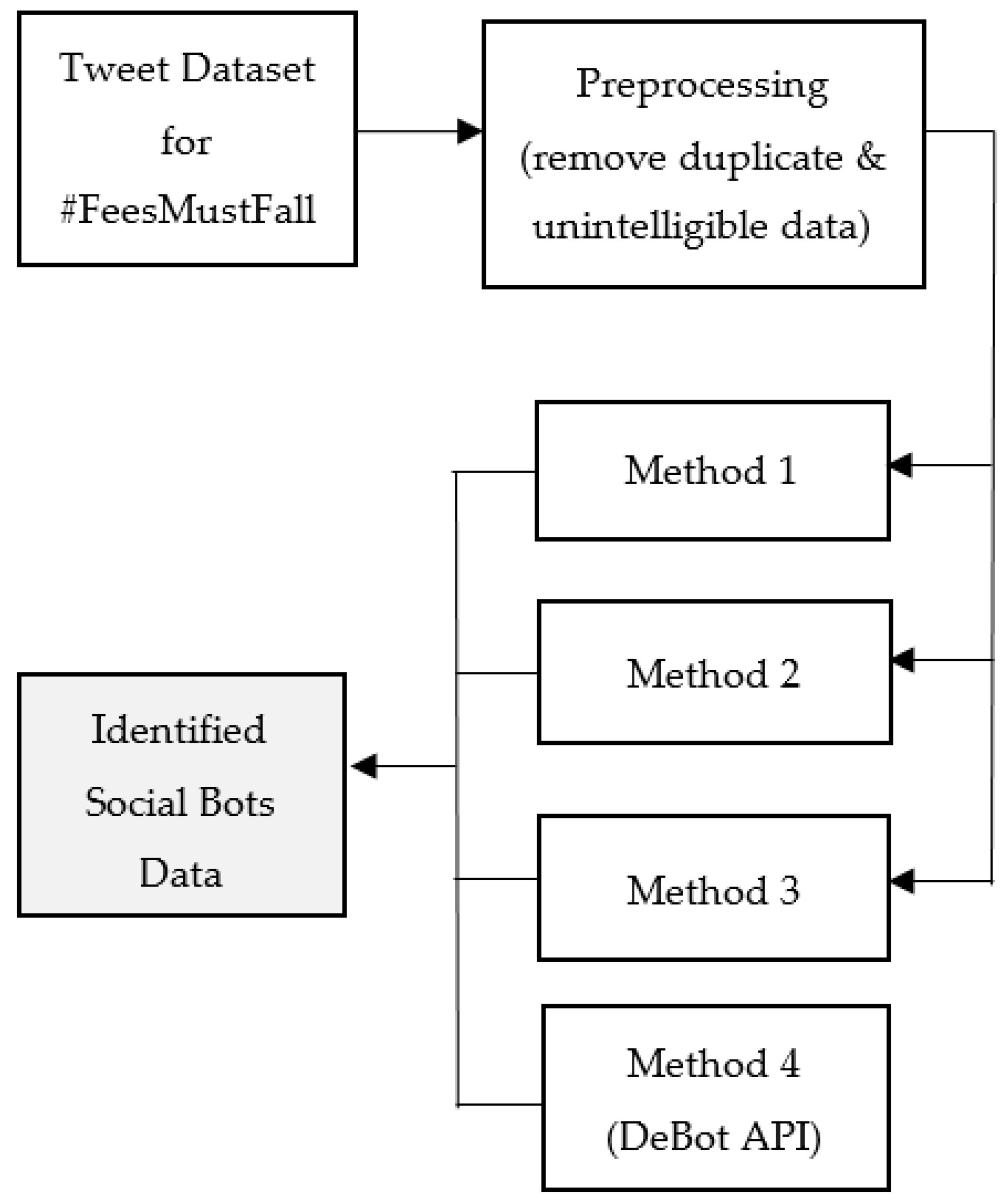
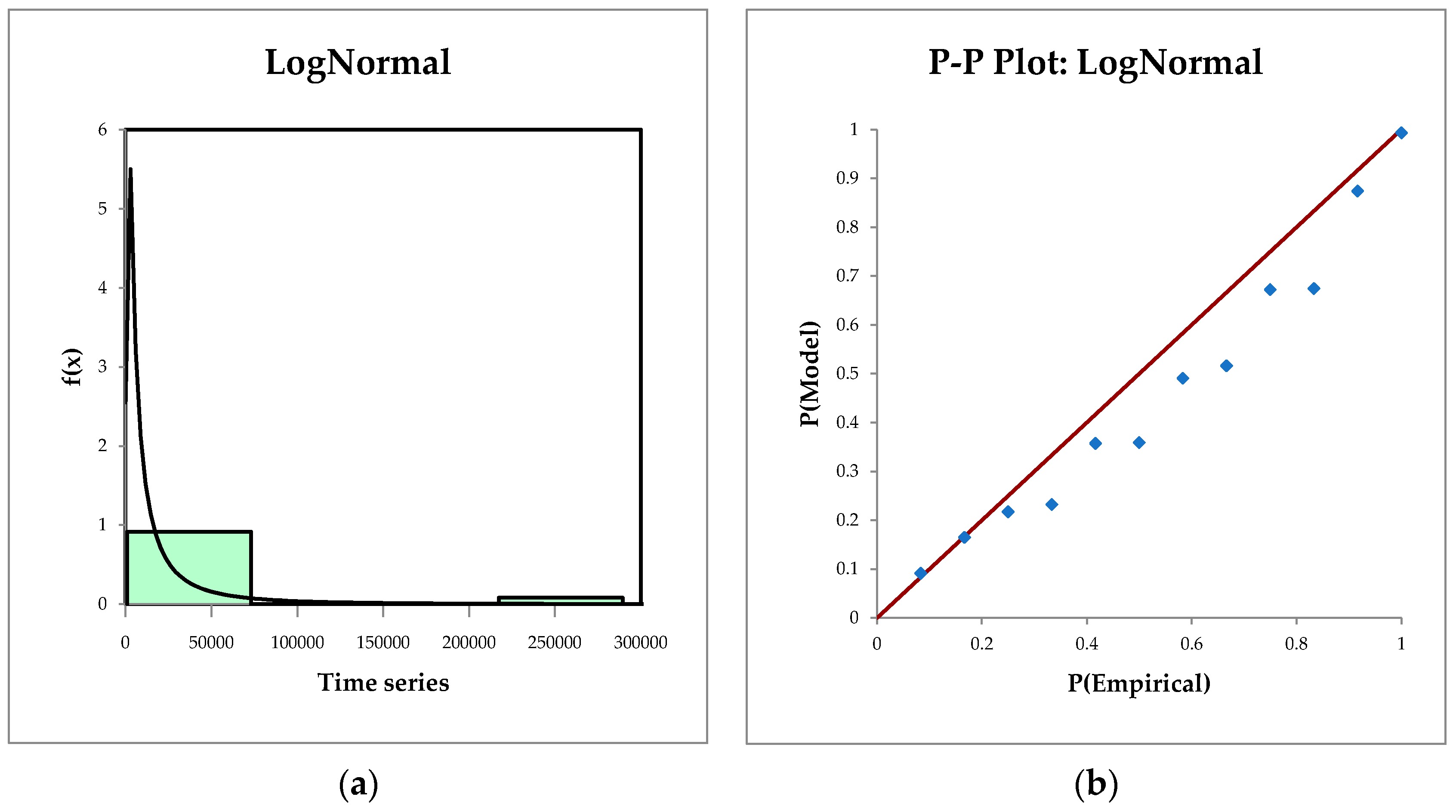
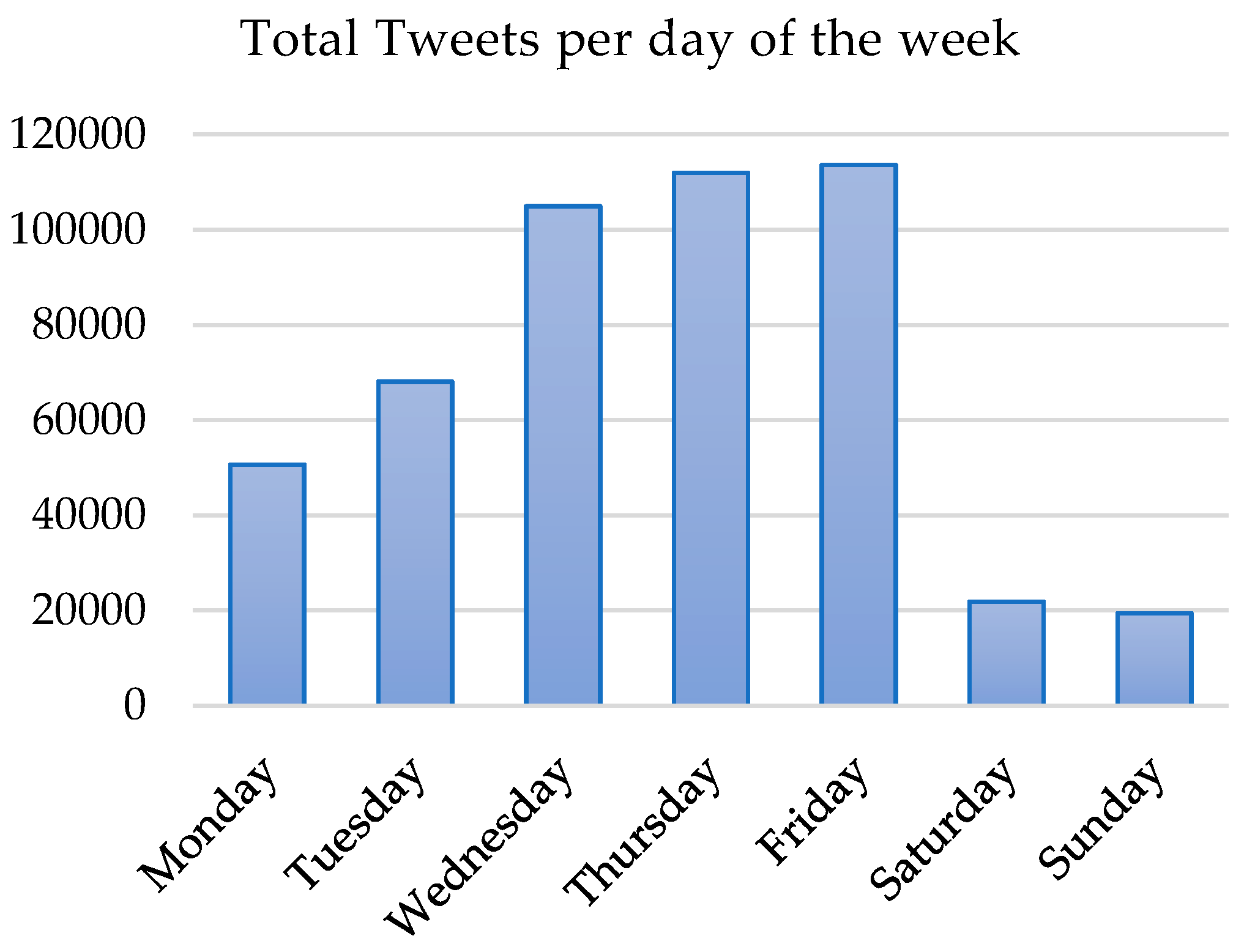
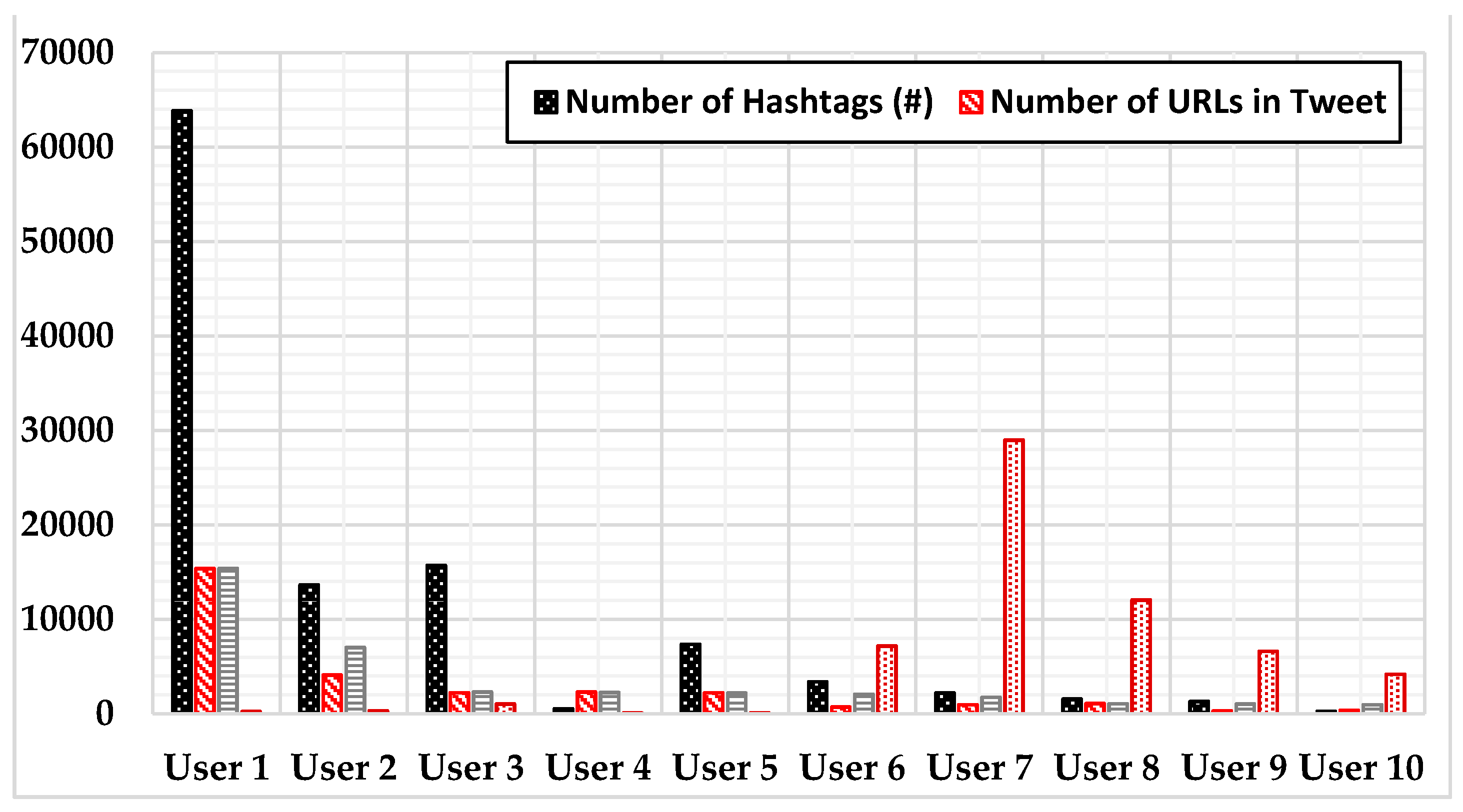

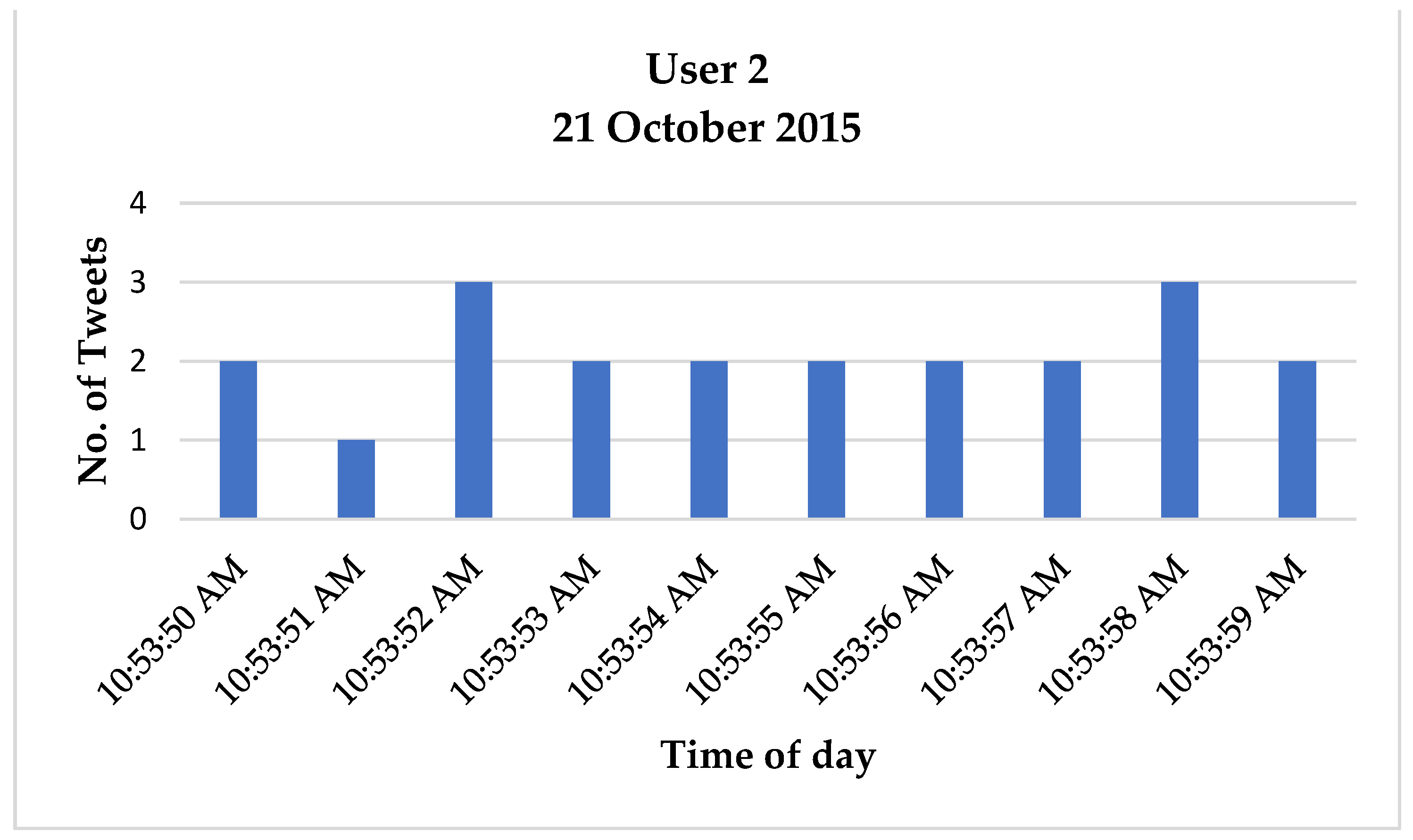
| Tweet | Date and Time | Retweet | Favorite | Tweet Source | Tweet Language | User Name |
|---|---|---|---|---|---|---|
| This is a dummy tweet #FeesMustFall. | 2017-04-09 17:55:35 | 1 | 4 | Twitter for Android | Eng. | User 37345 |
| This is a dummy tweet #FeesMustFall. | 2017-04-09 17:55:11 | 0 | 2 | TweetDeck | Eng. | User 17036 |
| This is a dummy tweet #FeesMustFall. | 2017-04-09 17:35:17 | 0 | 0 | Twitter for Android | Eng. | User 44562 |
| This is a dummy tweet #FeesMustFall. | 2017-04-09 17:21:58 | 0 | 0 | Twitter for iPhone | Eng. | User 21750 |
| This is a dummy tweet #FeesMustFall. | 2017-04-09 17:20:38 | 0 | 0 | Twitter Web Client | Und. | User 77419 |
| Language | No. of Tweets | Language | No. of Tweets | Language | No. of Tweets | Language | No. of Tweets | Sum Total |
|---|---|---|---|---|---|---|---|---|
| English | 432,942 | Polish | 517 | Norwegian | 188 | Chinese | 11 | |
| Undefined | 48,176 | Romanian | 398 | Czech | 153 | Ukrainian | 11 | |
| Dutch | 3366 | Turkish | 349 | Arabic | 152 | Vietnamese | 6 | |
| Spanish | 941 | Hindi | 245 | Swedish | 152 | Urdu | 5 | |
| German | 791 | Finnish | 241 | Hungarian | 53 | Greek | 2 | |
| Portuguese | 744 | Danish | 226 | Japanese | 26 | Korean | 1 | |
| French | 523 | Italian | 217 | Russian | 12 | Persian | 1 | |
| Total | 487,483 | Total | 2193 | Total | 736 | Total | 37 | 490,449 |
| Year | Month | Number of Tweets | Total Number of Tweets |
|---|---|---|---|
| 2015 | March | 1 | 306,834 |
| April | 1 | ||
| October | 289,458 | ||
| November | 13,452 | ||
| December | 3922 | ||
| 2016 | January | 13,318 | 172,052 |
| February | 7215 | ||
| March | 3898 | ||
| April | 2076 | ||
| May | 900 | ||
| June | 1551 | ||
| July | 2238 | ||
| August | 6541 | ||
| September | 38,472 | ||
| October | 82,712 | ||
| November | 9505 | ||
| December | 3626 | ||
| 2017 | January | 4113 | 11,563 |
| February | 2244 | ||
| March | 2843 | ||
| April | 2363 | ||
| Total No. of Tweets (2015–2017) | 490,449 | ||
| Variable | Value |
|---|---|
| Count | 12 |
| Mean | 31,920 |
| St. Dev | 81,762 |
| Median | 5231.50 |
| Min | 900 |
| Max | 289,458 |
| Skew | 3370 |
| Kurt | 1150 |
Publisher’s Note: MDPI stays neutral with regard to jurisdictional claims in published maps and institutional affiliations. |
© 2022 by the authors. Licensee MDPI, Basel, Switzerland. This article is an open access article distributed under the terms and conditions of the Creative Commons Attribution (CC BY) license (https://creativecommons.org/licenses/by/4.0/).
Share and Cite
Khan, Y.; Thakur, S.; Obiyemi, O.; Adetiba, E. Identification of Bots and Cyborgs in the #FeesMustFall Campaign. Informatics 2022, 9, 21. https://doi.org/10.3390/informatics9010021
Khan Y, Thakur S, Obiyemi O, Adetiba E. Identification of Bots and Cyborgs in the #FeesMustFall Campaign. Informatics. 2022; 9(1):21. https://doi.org/10.3390/informatics9010021
Chicago/Turabian StyleKhan, Yaseen, Surendra Thakur, Obiseye Obiyemi, and Emmanuel Adetiba. 2022. "Identification of Bots and Cyborgs in the #FeesMustFall Campaign" Informatics 9, no. 1: 21. https://doi.org/10.3390/informatics9010021
APA StyleKhan, Y., Thakur, S., Obiyemi, O., & Adetiba, E. (2022). Identification of Bots and Cyborgs in the #FeesMustFall Campaign. Informatics, 9(1), 21. https://doi.org/10.3390/informatics9010021






